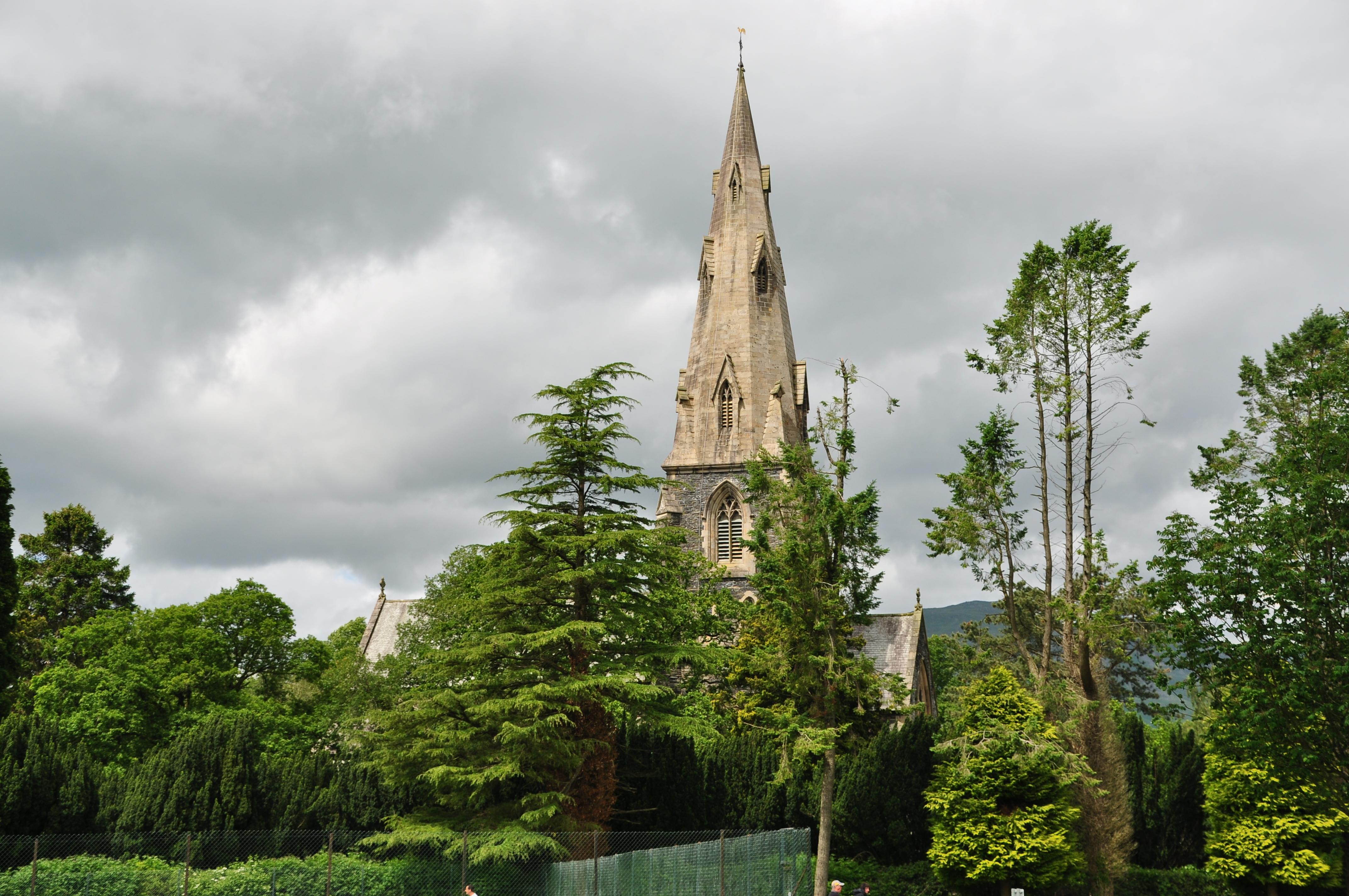Holy Trinity
Brathay, Cumbria
Unusual Romanesque style church in scenery of which Wordsworth said 'There is not a more beautiful situation outside of the Alps or among them than this'.

Visible from miles around that spire of St Mary’s nestles into the beautiful landscape of the Heart of the English Lake District.
Ambleside, Cumbria
St Mary’s church was designed in the 1850s by the famous architect Sir George Gilbert Scott. His other creations include St Pancras Station and the Albert Memorial among a large number of other wonderful ecclesiastical buildings. The style chosen for this church was the Early Gothic style but incorporates a number of unusual features. It was the first in the north to be influenced by the ‘Oxford Movement’. At the time of consecration Ambleside needed a larger church. The railway was bringing greater numbers of visitors into the area and the former parish church of St Anne was proving too small.
The idea of a memorial chapel to William Wordsworth was mooted soon after his death and the beautiful stained glass windows were installed 1853-5, created by Wailes of Newcastle. The other windows were dedicated to the women in his life; his wife, Mary, sister Dorothy, sister in law Sarah Hutchinson and daughter Dora.
Charlotte Mason and Harriet Martineau lived and worked in the village and Beatrix Potter who stayed many summers nearby as a child would also have known this church.
The organ is a Hope Jones organ installed in 1898 and was one of the first that utilised electric actions, the invention of its builder.
Fourteen northern saints are carved into the choir stalls. These include: Cuthbert, Hilda Bede, Aiden and Columba.
In the south aisle is a beautiful statue of ‘Virgin and Child’ by internationally renowned artist Josephine de Vasconcellos who lived nearby and gave the statue as part of a ‘time and talents’ event in the church. Other works can be seen in St Paul’s Cathedral and St Martin in the Fields, London and Coventry, Liverpool, Bradford and Gloucester Cathedrals among others.
To the west end of the church there is a unique wall painting of the ancient Rushbearing Ceremony. The mural was painted by students of the Royal College of Art evacuated to Ambleside during the Second World War and depicts the ceremony in 1944 with many local characters holding the traditional ‘bearings’. These are shapes of harps, crosses and staves among others forms, made out of rushes and entwined with flowers. The Rushbearing is still performed every first Saturday in July, a ceremony unique in this form to Ambleside.
Brathay, Cumbria
Unusual Romanesque style church in scenery of which Wordsworth said 'There is not a more beautiful situation outside of the Alps or among them than this'.
Langdale, Cumbria
Nestling in the heart of the Langdale Valley, Holy Trinity is a fine example of a country Lakeland church and is home to the much admired Millennium Tapestry depicting the history of Langdale.
Grasmere, Cumbria
This church is well known because of its associations with the great Romantic poet William Wordsworth, who lived in nearby Dove Cottage and is buried in the churchyard.